- UNESCO World Heritage-listed city walls
-
source >
 World Heritage Center (English/French)|http://whc.unesco.org
World Heritage Center (English/French)|http://whc.unesco.org
Korean National Commission for UNESCO (translation supervision)|http://unesco.or.kr/heritage
Asia
-
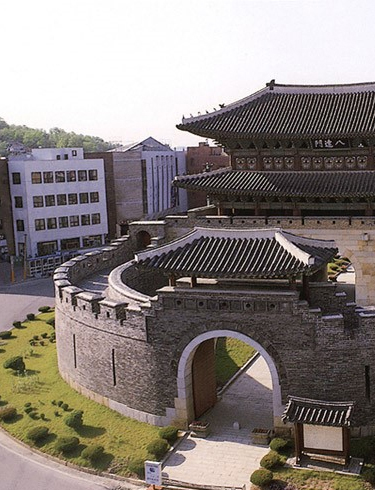 ⓒUNESCO
ⓒUNESCO
- Hwaseong Fortress
-
country : Republic of Korea
location : Gyeonggi-do Province
coordinate : N37 16 19.992, E127 0 29.988
Enrollment Year : 1997year
heritage area : 0ha
buffer zone : 0ha
- Standard
-
Standard(Ⅱ) :Standard(Ⅲ) :
- Summary(Ⅵ) : : When the Joseon King Jeongjo moved his father's tomb to Suwon at the end of the 18th century, he surrounded it with strong defensive works, laid out according to the precepts of an influential military architect of the period, who brought together the latest developments in the field from both East and West. The massive walls, extending for nearly 6 km, still survive; they are pierced by four gates and equipped with bastions, artillery towers and other features.
-

-
Citadel, Ancient City and Fortress Buildings of Derbent
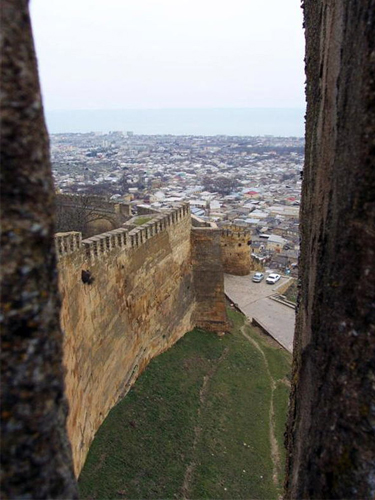 ⓒUNESCO
ⓒUNESCO
- Citadel, Ancient City and Fortress Buildings of Derbent
-
country : Russian Federation
location : Dagestan, Eastern Caucasus, Western coast of Caspian Sea
coordinate : N42 3 10.7, E48 17 49.9
Enrollment Year : 2003year
heritage area : 99999ha
buffer zone : 99999ha
- Standard
-
Standard(Ⅲ) :Standard(IV) :
- Summary(Ⅵ) : : The Citadel, Ancient City and Fortress Buildings of Derbent were part of the northern lines of the Sasanian Persian Empire, which extended east and west of the Caspian Sea. The fortification was built in stone. It consisted of two parallel walls that formed a barrier from the seashore up to the mountain. The town of Derbent was built between these two walls, and has retained part of its medieval fabric. The site continued to be of great strategic importance until the 19th century.
-

-
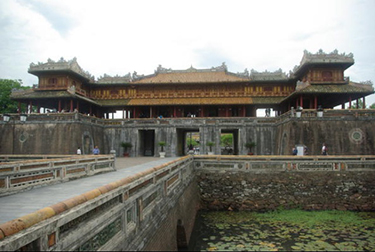 ⓒUNESCO
ⓒUNESCO
- Complex of Hué Monuments
-
country : Viet Nam
location : Thua Thien – Hue
coordinate : N16 28 9.984, E107 34 40.008
Enrollment Year : 1993year
heritage area : 0ha
buffer zone : 0ha
- Standard
-
Standard(IV) :
- Summary(Ⅵ) : : Established as the capital of unified Viet Nam in 1802, Hué was not only the political but also the cultural and religious centre under the Nguyen dynasty until 1945. The Perfume River winds its way through the Capital City, the Imperial City, the Forbidden Purple City and the Inner City, giving this unique feudal capital a setting of great natural beauty.
-

-
Central Sector of the Imperial Citadel of Thang Long - Hanoi
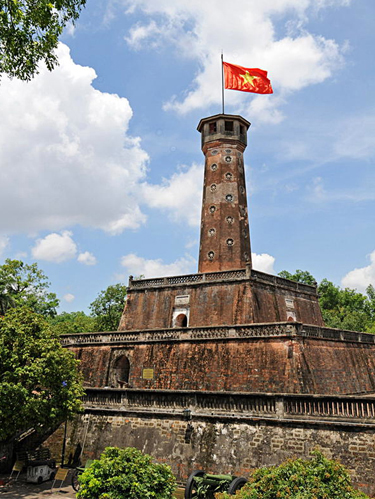 ⓒBui Minh Tri
ⓒBui Minh Tri
- Central Sector of the Imperial Citadel of Thang Long - Hanoi
-
country : Viet Nam
location :
coordinate : N21 2 22, E105 50 14
Enrollment Year : 2010year
heritage area : 18ha
buffer zone : 108ha
- Standard
-
Standard(Ⅱ) :Standard(Ⅲ) :Standard(Ⅵ) :
- Summary(Ⅵ) : : The Thang Long Imperial Citadel was built in the 11th century by the Ly Viet Dynasty, marking the independence of the Dai Viet. It was constructed on the remains of a Chinese fortress dating from the 7th century, on drained land reclaimed from the Red River Delta in Hanoi. It was the centre of regional political power for almost 13 centuries without interruption. The Imperial Citadel buildings and the remains in the 18 Hoang Dieu Archaeological Site reflect a unique South-East Asian culture specific to the lower Red River Valley, at the crossroads between influences coming from China in the north and the ancient Kingdom of Champa in the south.
-

-
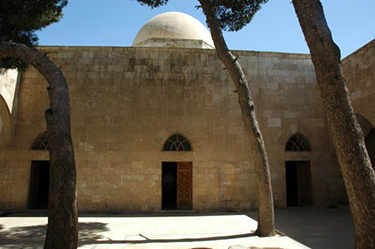 ⓒUNESCO
ⓒUNESCO
- Ancient City of Aleppo
-
country : Syrian Arab Republic
location : Aleppo
coordinate : N36 13 59.988, E37 10 0.012
Enrollment Year : 1986year
heritage area : 0ha
buffer zone : 0ha
- Standard
-
Standard(Ⅲ) :Standard(IV) :
- Summary(Ⅵ) : : Located at the crossroads of several trade routes from the 2nd millennium B.C., Aleppo was ruled successively by the Hittites, Assyrians, Arabs, Mongols, Mamelukes and Ottomans. The 13th-century citadel, 12th-century Great Mosque and various 17th-century madrasas, palaces, caravanserais and hammams all form part of the city's cohesive, unique urban fabric, now threatened by overpopulation.
-

-
Walled City of Baku with the Shirvanshah's Palace and Maiden Tower
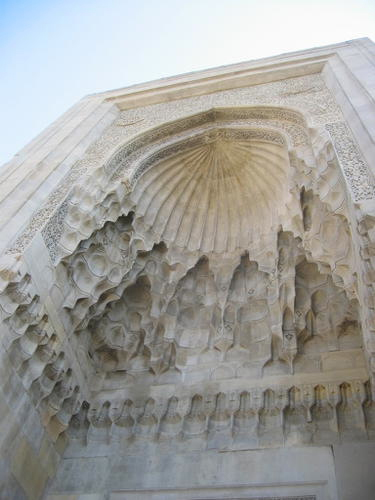 ⓒUNESCO
ⓒUNESCO
- Walled City of Baku with the Shirvanshah's Palace and Maiden Tower
-
country : Azerbaijan
location : Apsheron peninsula
coordinate : N40 22 0, E49 49 60
Enrollment Year : 2000year
heritage area : 22ha
buffer zone : 0ha
- Standard
-
Standard(IV) :
- Summary(Ⅵ) : : Built on a site inhabited since the Palaeolithic period, the Walled City of Baku reveals evidence of Zoroastrian, Sasanian, Arabic, Persian, Shirvani, Ottoman, and Russian presence in cultural continuity. The Inner City (Icheri Sheher) has preserved much of its 12th-century defensive walls. The 12th-century Maiden Tower (Giz Galasy) is built over earlier structures dating from the 7th to 6th centuries BC, and the 15th-century Shirvanshahs' Palace is one of the pearls of Azerbaijan's architecture.
-

-
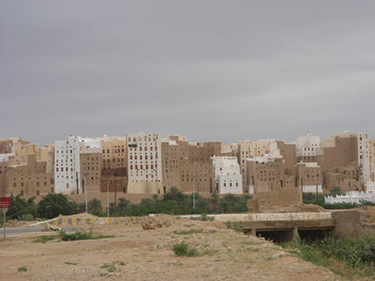 ⓒOUR PLACE
ⓒOUR PLACE
- Old Walled City of Shibam
-
country : Yemen
location : Hadramaut Governorate, in the Wadi Hadramaut, Seiyun District
coordinate : N15 55 36.984, E48 37 36.012
Enrollment Year : 1982year
heritage area : 0ha
buffer zone : 0ha
- Standard
-
Standard(Ⅲ) :Standard(IV) :Standard(Ⅴ) :
- Summary(Ⅵ) : : Surrounded by a fortified wall, the 16th-century city of Shibam is one of the oldest and best examples of urban planning based on the principle of vertical construction. Its impressive tower-like structures rise out of the cliff and have given the city the nickname of ‘the Manhattan of the desert’.
-

-
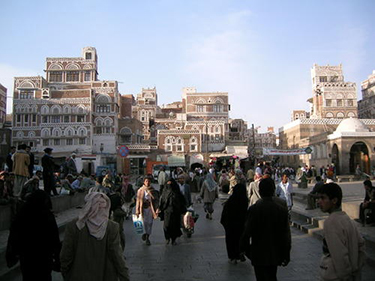 ⓒUNESCO
ⓒUNESCO
- Old City of Sana'a
-
country : Yemen
location : Governorate of the capital Sana’a
coordinate : N15 21 20, E44 12 29
Enrollment Year : 1986year
heritage area : 0ha
buffer zone : 0ha
- Standard
-
Standard(IV) :Standard(Ⅴ) :Standard(Ⅵ) :
- Summary(Ⅵ) : : Situated in a mountain valley at an altitude of 2,200 m, Sana’a has been inhabited for more than 2,500 years. In the 7th and 8th centuries the city became a major centre for the propagation of Islam. This religious and political heritage can be seen in the 103 mosques, 14 hammams and over 6,000 houses, all built before the 11th century. Sana’a’s many-storeyed tower-houses built of rammed earth (pisé) add to the beauty of the site.
-

-
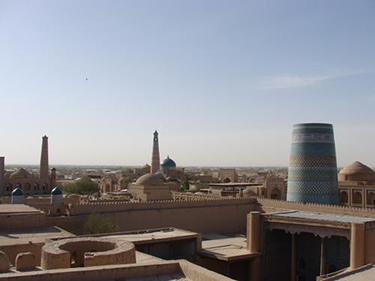 ⓒUNESCO
ⓒUNESCO
- Itchan Kala
-
country : Uzbekistan
location : Khorezm region, Khiva
coordinate : N41 22 41.988, E60 21 50.004
Enrollment Year : 1990year
heritage area : 26ha
buffer zone : 0ha
- Standard
-
Standard(Ⅲ) :Standard(IV) :Standard(Ⅴ) :
- Summary(Ⅵ) : : Itchan Kala is the inner town (protected by brick walls some 10 m high) of the old Khiva oasis, which was the last resting-place of caravans before crossing the desert to Iran. Although few very old monuments still remain, it is a coherent and well-preserved example of the Muslim architecture of Central Asia. There are several outstanding structures such as the Djuma Mosque, the mausoleums and the madrasas and the two magnificent palaces built at the beginning of the 19th century by Alla-Kulli-Khan.
-

-
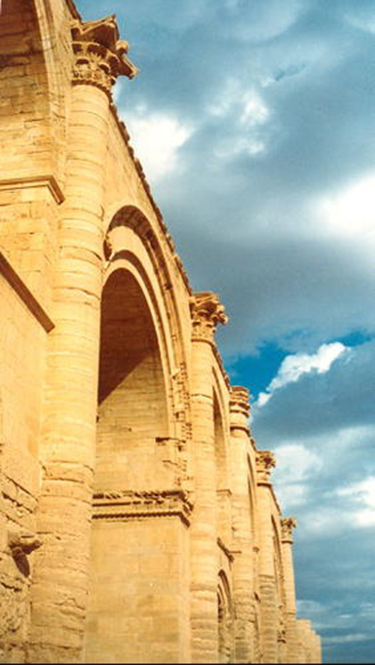 ⓒUNESCO
ⓒUNESCO
- Hatra
-
country : Iraq
location : Governorate of Ninawa
coordinate : N35 35 17.016, E42 43 5.988
Enrollment Year : 1985year
heritage area : 324ha
buffer zone : 0ha
- Standard
-
Standard(Ⅱ) :Standard(Ⅲ) :Standard(IV) :Standard(Ⅵ) :
- Summary(Ⅵ) : : A large fortified city under the influence of the Parthian Empire and capital of the first Arab Kingdom, Hatra withstood invasions by the Romans in A.D. 116 and 198 thanks to its high, thick walls reinforced by towers. The remains of the city, especially the temples where Hellenistic and Roman architecture blend with Eastern decorative features, attest to the greatness of its civilization.
-





